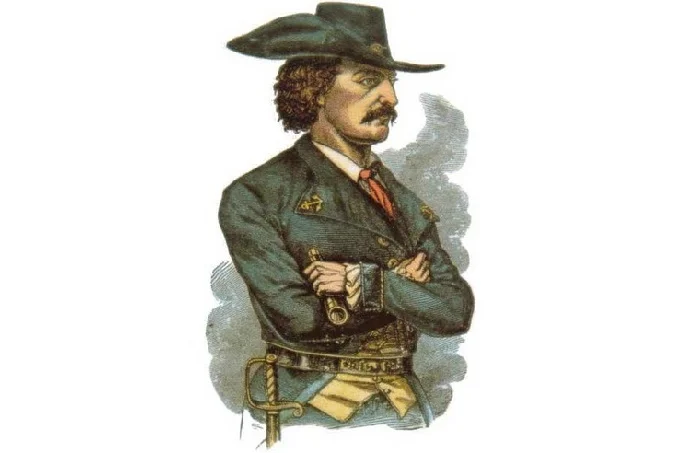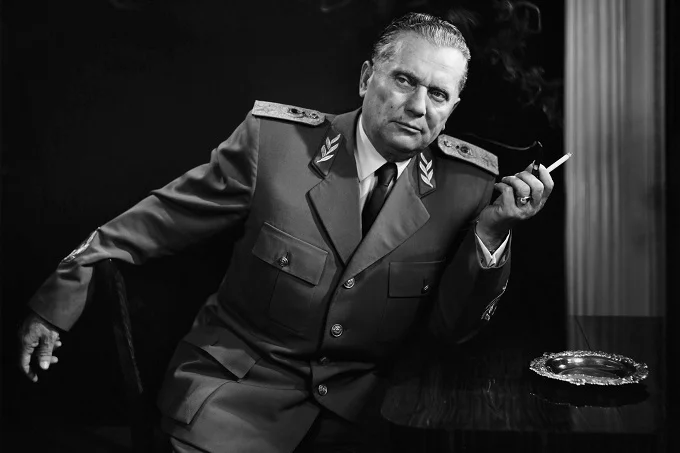5 people who weren’t scared to take big risks and succeeded

People have an embedded sense of fear that helps them avoid potentially dangerous situations. So when you’re walking down a dark street, and you see a drunken company, you turn around and walk around them a mile away, it doesn’t mean you’re a coward. It just shows that you think rationally and intelligently to assess the risks, even if, in reality, nothing would have happened to you.
But among the vast majority of “cowards,” there are individuals who have spit on their fears, so much so that they have made history. They were not afraid to take big risks and won.
French pirate Jean Lafitte put a bounty on the head of a man who put a bounty on his head

Jean Lafitte was a French pirate who attacked British and Spanish ships in the Gulf of Mexico in the early 19th century, all, you might say, under the patronage of the US government. This is understandable, since the French helped the Americans defend their independence and, like the US, were in conflict with the British and Spanish empires.
Lafitte’s life is covered with many legends, some of which look fantastic. In the early 19th century, when Texas still belonged to Spain, suffering from the raids of the flotilla of Jean Lafitte, the governor of that territory assigned a price of $500 for the pirate’s head, a large sum for those times. Then Lafitte, undaunted, put a return price on the governor’s head of $5,000. Realizing that people would be willing to bring even a European monarch’s head for such a huge sum of money, the governor changed his mind about catching the pirate.
US Mayor John Robinette turned to USSR when US government turned him down
In the 1970s, Vulcan, a small settlement of a couple of hundred people, asked the governor of West Virginia to build a new bridge because the old one was in poor condition and could soon collapse. There was no alternative to the bridge, and it was the only way to get to the other side. However, the governor refused, believing that the cost of building the bridge was exorbitant in comparison to the city’s population.
Then the mayor, John Robinette, and residents in 1977 wrote a letter to the Soviet embassy in Washington and the GDR asking for funding to rebuild the bridge. Just so you understand, the Cold War was in full swing then, and such a request was beyond fantastic.
The USSR did not miss an opportunity to show how much the US did not care about its own citizens and sent its journalist to America to cover the problem in more detail. When American newspapers learned about it, the news spread across the country, and that’s when state authorities not only reversed their decision but also quickly found more than a million dollars to build the bridge.
Viking leader Rollon didn’t grovel and overturned the king

In 911, after a long fight with the Vikings, not having the strength for further resistance, the ruler of the West Francan Kingdom, Charles III the Simple, made a treaty with the leader of the Normans, Rollon. Under it, Rollo became Duke of Normandy and in return, recognized the King of France as his liege lord and converted to Christianity. Since this meant little to the Vikings, Rollon and his men agreed to the terms.
But there was another condition: Rollo had to kiss the king’s feet on the oath, which was a humiliating act for a proud Viking. But since the treaty had already been signed and promised the Normans some nice gains in France, Rollo had it his way. He grabbed the king’s foot and began to pull it to his lips while standing at full height. The king, who had not expected such an action, lost his balance and fell on his back, after which everyone around him burst out laughing.
It is remarkable that Rollon, who at his baptism took the name of Robert I, not only was not punished for this, but apparently showed in this way that he was not some pawn, and later even married the king’s daughter.
Yugoslav President Josip Broz Tito threatened Stalin

During the Nazi occupation of Yugoslavia, Josip Broz Tito was one of the most successful partisan leaders. As a communist, Tito had the full support of the USSR, but when the war ended, by refusing to obey Joseph Stalin on the question of Yugoslavia’s inclusion in the Balkan Federation, he fell foul of the Soviet Union. So much so, that according to some sources, Stalin sent 22 assassins to him, but they all failed.
Then Tito wrote a letter to Stalin demanding that the Soviet leader stop sending men to him. Otherwise, he, Tito, would send only one man to Moscow, and the second would no longer be needed. Considering that Josip Broz Tito did not die until 1980, and that Joseph Stalin died in 1953 under circumstances that are not fully clarified, who knows, maybe the Yugoslav leader was not joking.
Chancellor of the German Empire Otto von Bismarck taught manners to a man who shot him five times

In 1866, Ferdinand Cogen-Blind, believing that the removal of Otto von Bismarck would help prevent a war between Germany and Austria because of the strained relations between the two countries, decided to assassinate the iron chancellor.
On May 7, not far from the Russian embassy, he bought the time when Bismarck would be returning home after a report to King Wilhelm I, after which he jumped out and shot Bismarck twice in the back. However, he did not fall down, struck by the bullets, or even run in fear, but decided to fight. Bismarck grabbed Cogen-Blind and began to teach him manners through physical force. During this Cogen-Blind managed to shoot Bismarck three more times, but he did not react in any way.
Soon soldiers came to the chancellor’s aid and apprehended the murderer, and Bismarck went home as if nothing had happened. In the evening, he was examined by the king’s personal physician, who determined that the first three bullets had gone tangentially and that two more had bounced off a rib without causing the chancellor any significant harm. Truly, Otto von Bismarck earned his nickname the iron chancellor.




